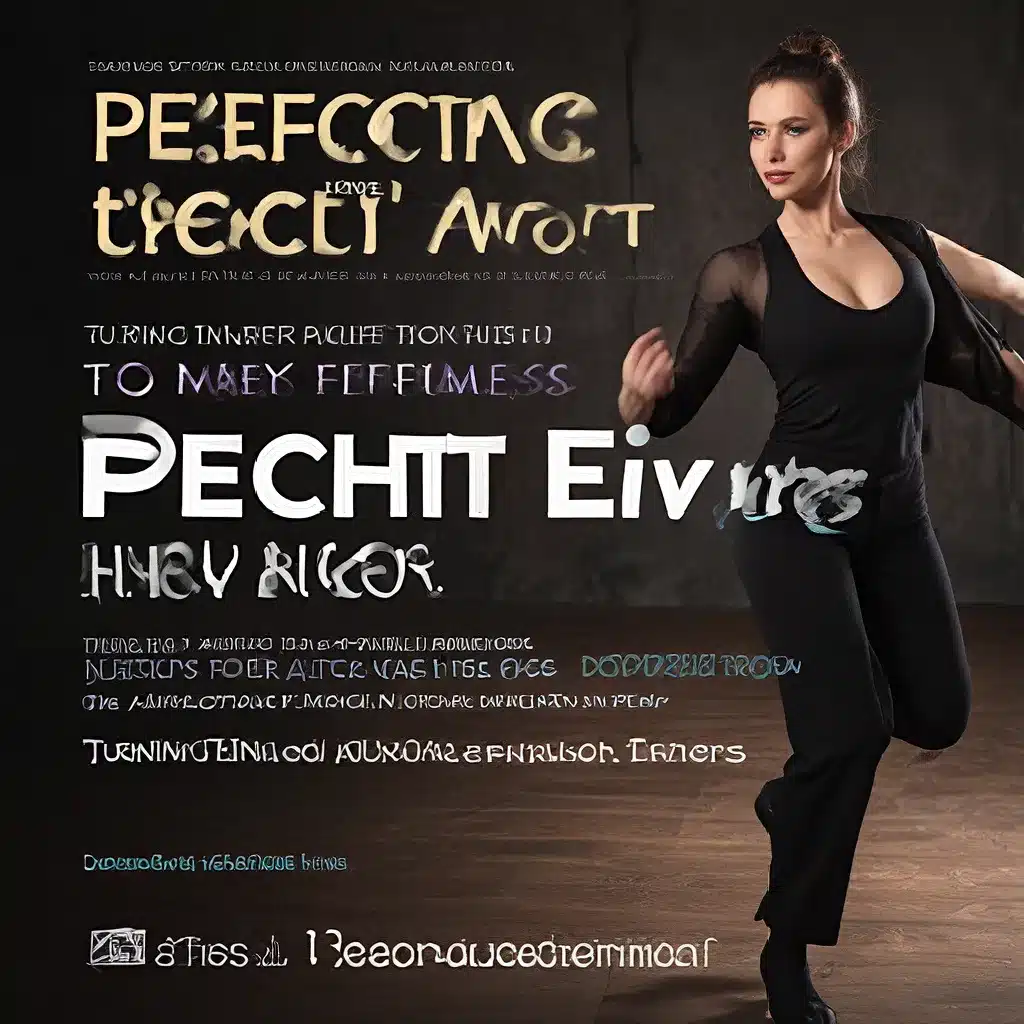
Unlock a World of Possibilities with Pixel-Perfect Pivots
As a performer, I’ve always been fascinated by the art of the pivot turn. It’s a deceptively simple movement that can elevate your dancing to new heights, adding grace, power, and that elusive “wow” factor that captivates audiences. But mastering the pivot is no easy feat – it requires precision, control, and a deep understanding of your body’s mechanics.
That’s why I’m excited to share with you my hard-earned insights on perfecting the pivot. Whether you’re a seasoned pro or a rising star, these techniques will help you unlock a world of possibilities on the stage.
Laying the Foundation: Understanding the Mechanics of the Pivot
Let’s start with the basics. The pivot turn is a fundamental movement in dance, where you rotate your body around a stable pivot point, usually the ball of the supporting foot. This allows you to change direction quickly and seamlessly, adding dynamism and fluidity to your performance.
But the key to a successful pivot lies in the preparation. Just like in design, where attention to detail can unlock a world of possibilities, the pivot requires meticulous control over your body’s positioning and weight distribution.
Before you even begin to turn, you need to establish a strong, balanced foundation. Your supporting foot should be firmly planted, with your weight evenly distributed across the ball and heel. Your core should be engaged, your shoulders relaxed, and your gaze focused on your endpoint. This sets the stage for a smooth, controlled pivot.
Mastering the Mechanics: Techniques for Perfecting the Pivot
Now that we’ve laid the groundwork, let’s dive into the nitty-gritty of pivot technique. As with any complex movement, there are a few key elements to focus on:
1. Initiate with the Core
The pivot turn starts from the inside out. It’s not about twisting your upper body or flailing your limbs – the power and control come from your core. Engage your abdominal muscles to initiate the turn, using your center of gravity to drive the rotation.
Imagine a strong, solid axis running through the center of your body. As you pivot, this axis should remain stable and unwavering, guiding the rest of your limbs through the turn.
2. Utilize the Supporting Foot
Your supporting foot is the anchor of the pivot, so treat it with the utmost care and attention. Press firmly into the ball of the foot, using it as a pivot point to rotate your body. Avoid any excessive movement or shifting of the foot – it should remain grounded and stable throughout the turn.
Visualize your supporting foot as a tripod, with equal weight distribution across the ball, inner, and outer edges. This will give you the stability and control you need to execute a clean, precise pivot.
3. Control the Momentum
One of the biggest challenges with the pivot is managing the momentum. It’s easy to get carried away and lose control, leading to a sloppy, unbalanced turn. To avoid this, you need to be mindful of your body’s acceleration and deceleration.
As you initiate the pivot, focus on generating just the right amount of momentum. Too little, and the turn will lack power and energy; too much, and you’ll struggle to maintain control. Just like choosing the perfect skate shoes to accommodate your skating style, you need to find the sweet spot that allows you to pivot with confidence and grace.
Putting it All Together: Incorporating Pivots into Your Routine
Now that you’ve mastered the individual elements of the pivot, it’s time to start integrating them into your dance routines. This is where the real magic happens, as you begin to weave the pivot into the fabric of your performance.
One of my favorite ways to showcase the pivot is to use it as a transition between movement phrases. For example, you might pivot to change direction and then launch into a series of jumps or turns. The pivot adds a sense of fluidity and dynamism, seamlessly connecting one element to the next.
You can also experiment with incorporating pivots into your choreography in more unexpected ways. Try using them as the foundation for a complex sequence, or as a highlight moment that showcases your technical prowess. The possibilities are endless, and the more you practice, the more comfortable and confident you’ll become.
And don’t forget to have fun with it! The pivot is a powerful tool, but it’s also an opportunity to express your artistry and personality. Infuse your pivots with your own unique style and flair, and let your performance shine.
Embracing the Challenge: Mastering the Pivot Step-by-Step
I know that perfecting the pivot can be a daunting task, but I promise it’s worth the effort. With dedication and perseverance, you can transform this seemingly simple movement into a true signature element of your dance repertoire.
Start by focusing on the fundamentals – establishing that strong, balanced foundation and mastering the core-driven initiation. Once you’ve got that down, begin to experiment with different variations and applications, always striving for precision and control.
And remember, the journey to perfecting the pivot is just as rewarding as the destination. Embrace the challenges, celebrate the small victories, and don’t be afraid to make mistakes. After all, that’s what the musical theater education and performance center is all about – unlocking your full potential as a performer.
So, what are you waiting for? Let’s get to work on perfecting the pivot, one turn at a time. Who knows – with a little practice and a whole lot of passion, you might just find yourself captivating audiences from center stage, your pivots shining like the stars.

